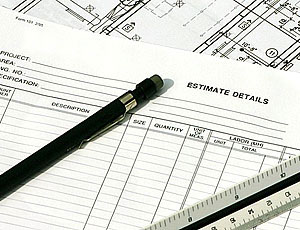Just the other week I heard of two bid openings in which qualified bidders lost the opportunity to pick up work and in both cases unqualified bidders got the job. How did it happen? The low bidders “bombed” their respective jobs, meaning, they bid the work substantially lower than the other competitors for the project.


SHORT
The low bid on one project was 25% to 30% below the second and third low bids. The rest of the bids were slightly higher than these two. You may say, “So what? The low- bidder apparently thinks it can do the job cheaper than the others. This is what competition is all about, isn’t it?” Actually, it isn’t.
Let’s set some background information out for everyone to understand. All of these bids are or should be developed by experienced estimators. If the estimators are knowledgeable and experienced, the takeoff will be performed accurately so there will be minimal variance in the material costs when the actual purchasing is completed. The bidder will use materials and equipment prices from vendors capable of supplying the correct materials specified.
The proficient estimator will be able to determine the correct labor productivity for the project. The contractor will have the right equipment for the project or the ability to rent what may be needed based on the work and the project conditions. In addition, the estimator will select the subcontractor with the right scope of work priced at the lowest possible cost.
The indirect costs will be estimated to match the project. This means the right amount of supervision and support to perform the work efficiently. Once the cost is known, profit will be added to make the work worthwhile to bid and perform. Profit on construction contracts is less than 5% of the cost.
With all bidders having experienced estimators and similar profit requirements, bid variances should come down to small percentages. With the same takeoff and competitive vendors, materials variances should be under 1%. With similar labor productivity and labor hourly costs, the labor and resulting equipment costs should vary little as well. If all the estimators have determined the contract requirements correctly, then the indirect cost variances will be small.
This leaves each of the bidders only one place to make any bid adjustments of any size: the profit applied to the costs. As mentioned above, this sum is less than 5% of the bid amount.
So where does the low bidder come up with a bid 25% to 30% lower than all other competitors?
It could have had preferential pricing on major equipment. While unlikely, it is possible, but not for such a large amount of the total bid. Did it save on labor with some new technology? That seems as unlikely as getting preferential pricing in the current market.
There are two possible stand-out answers that can be put forward without performing a full detailed evaluation of the bids. The first possible explanation is the low bidder made a large mistake in preparing its bid. I have seen bidders omit an entire floor or wing of a building. It could be the bidder missed an amendment to the bid documents or had an untrained or inexperienced estimator or estimating team prepare the bid. Was a takeoff missed? Labor productivity fumbled? Special conditions overlooked? Was a subcontractor quote used that should not have been?
There is a lot to be concerned about with bids like this. The owner or client, along with their architectural and engineering firms, should be worried. The owner has to be concerned the contractor will be there to finish the project. The architect and engineer have to be concerned the correct materials and equipment are being supplied and installed. The materials and equipment vendors on the project should be concerned. Will they be paid?
The craft workers may be happy for a few weeks—they have jobs. But are wage cuts coming? What about payments for fringe benefits? Spending for safety supplies? Will the project managers and superintendents have to furnish their own vehicles instead of using company- provided vehicles? What about coverage for liability insurance?
The subcontractors for the project should be worried. Immediate pressure can be applied to lower their price. Their bids may be shopped. If they get the work, will they be paid?
The competing contractors that bid the project are worried about the impact on their finances and operations. The negative impact of having a goofy low bid by a competitor will be felt on future projects.
The only one involved in the project that doesn’t seem to be worried is the low bidder. This organization’s staff should worry the most.
Presuming the low bidder didn’t make a mistake, this leaves another unsettling answer as to why the low bidder was substantially under the pack: Did the company’s owners decide to bid the work at or below some cost point to keep work coming in or just to generate cash flow? This is the robbing-Peter-to-pay Paul idea, and it doesn’t work.
The answer is that the low bidder does not understand the market and how to make a profit. In other words, the lower bidder is run by poor business managers.
The ideal situation on competitive bids is to be low by a very small amount. That’s how a contractor maximizes the potential for profit! And “profit” is not a dirty word but is necessary for many reasons.
What the industry is facing today is complicated by having too many bidders either making mistakes in bids or poorly managing their businesses.
By the way, it’s bad enough that the tough times are here and the qualified bidders lose to bad business managers or poor bidders. In good times, these same bad business managers and poor bidders succeed despite themselves and ruin markets for the competent bidders.





